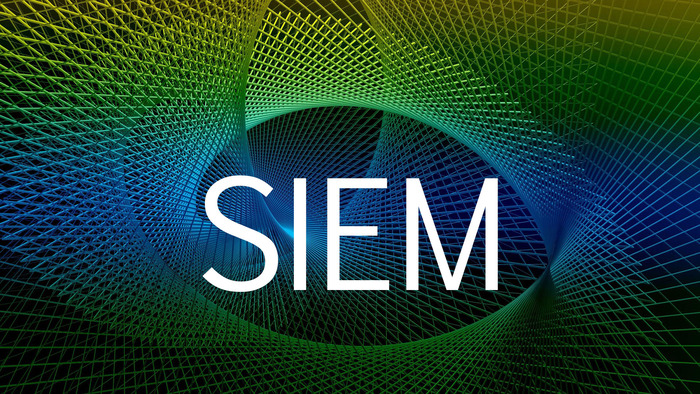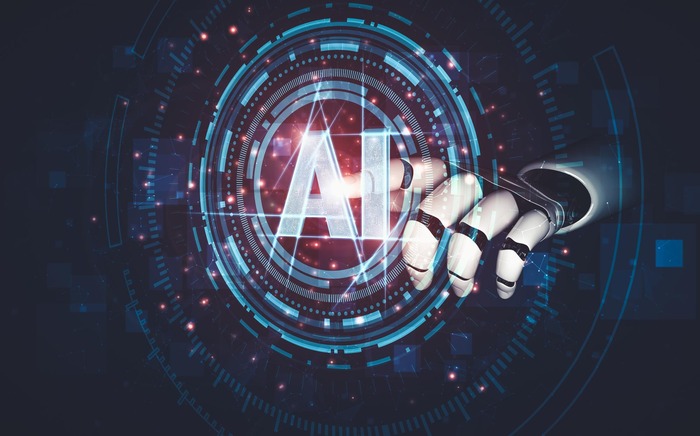The fundamental role of SIEM is to provide enterprises with threat monitoring, event correlation, incident response, and reporting. By collecting, centralizing, normalizing, and analyzing log data from various sources, including applications and firewalls, SIEM acts as a vigilant guardian, alerting IT security teams to potential threats like failed logins and malware activities.
However, the sheer volume of data generated by enterprises can overwhelm even the most dedicated security teams. This is where AI steps in, amplifying the capabilities of SIEM and addressing the challenges posed by modern cybersecurity.
For starters, let’s clarify what is Security Information and Event Management (SIEM)? It refers to software that analyzes security alerts from network devices and applications in real time.
AI in SIEM Offers Predictive Capabilities
In the bid to understand what is SIEM and how it works, AI and machine learning remain a vital capability that enhances threat detection across extensive datasets. This machine learning not only identifies known threats but also learns and adapts to new threats in real-time. This proactive approach allows AI in SIEM to predict potential security breaches and deflect attacks efficiently.
Stellar Cyber, a popular name in cybersecurity solutions, recognizes the importance of AI in bolstering predictive capabilities within SIEM. As organizations generate petabytes of data, machine learning becomes indispensable in automating threat detection and easing the burden on security teams.
Discover More Blind Spots
As enterprises scale, they become vulnerable to blind spots that can remain unnoticed for extended periods. These unmonitored areas serve as potential security holes, ripe for exploitation by malicious actors. AI in SIEM excels at enhancing visibility, uncovering blind spots, and drawing security logs from previously unmonitored network segments.
AI SIEMs can help an organization fortify its cybersecurity posture, ensuring that no corner of its network goes unobserved. The ability to detect threats in these blind spots is vital for comprehensive security.
Reduce The Need For Human Expertise
While AI in SIEM cannot replace human IT security teams, it significantly optimizes their efforts. Human expertise remains essential for modifying security correlation parameters, leading threat-hunting initiatives, and orchestrating incident responses. Here’s where AI steps in, providing a robust foundation for IT security teams.
Its innovative approach ensures that SIEM complements human ingenuity, facilitating automated threat hunting, contextualization of alerts, and swift response in organizations with limited security workforces.
A Paradigm Shift in Cybersecurity
Traditional SIEM systems need help to keep pace with evolving threats. So, the emergence of AI-based SIEM marks a paradigm shift, leveraging artificial intelligence and machine learning to overcome past challenges.
AI-based SIEM not only automates data aggregation, normalization, and enrichment but also empowers proactive threat detection and response. It learns from historical data, predicts potential threats, and automates incident response, minimizing the impact of security breaches.
Components of AI-Driven SIEM
- Data Aggregation, Normalization, and Enrichment
In cybersecurity, data aggregation involves collecting information from various sources, and normalization ensures consistency. AI SIEM excels in automating these processes, intelligently sorting through vast datasets, and reducing the time required for these critical tasks. Moreover, data enrichment enhances the quality of collected data by adding contextual information. One of the major benefits of having enriched data is that it reduces false positives, enabling the security operations center to make pinpoint decisions.
- Machine Learning and Pattern Recognition
Machine learning and pattern recognition set AI SIEM apart from its traditional counterparts. By analyzing historical security data, AI SIEM identifies patterns, creates baselines of ‘normal’ behavior, and continuously monitors current data for anomalies. This proactive approach reduces the time to detect and respond to potential threats.
- Automated Incident Response
Quick and effective incident response is critical, and AI-based SIEM introduces automation to streamline this process. It automatically triggers alerts, implements predefined responses, and orchestrates complex workflows. Many SIEM solutions, such as Stellar Cyber, have automated incident response, enabling more efficient and effective threat hunting.
- Predictive Analytics
Predictive analytics, another hallmark of AI SIEM, leverages historical data to foresee potential threats. Organizations can proactively secure their systems, prioritizing and preventing security incidents before they occur.
How AI and ML in SIEM Revolutionize Security Operations Centers
AI and machine learning play major roles in elevating SIEM capabilities, offering enhanced threat detection, efficient incident response, reduced false positives, and improved insights into an organization’s security posture.
- Improved Efficiency of Incident Response
Traditionally, responding to threats involved manual analysis and decision-making, a time-consuming process. AI integrated into SIEM automates much of this process, reducing response times and potentially preventing significant damage.
- Reduced False Positives
False positives distract security teams from real threats. AI excels in differentiating normal behavior from potential threats, resulting in fewer false positives and allowing focused attention on genuine threats.
- Improved Insight into Security Posture
AI provides a deeper understanding of vulnerabilities and threats. With its advanced analytics, it offers actionable recommendations, ensuring organizations stay one step ahead of potential risks.
Algorithms and Techniques AI-Based SIEM Uses to Detect Threats
- Deep Learning Algorithms
Deep Learning, a subset of machine learning, utilizes artificial neural networks to analyze vast amounts of data. Incorporating deep learning algorithms mimics the human brain’s decision-making process and identifies complex patterns indicative of security threats.
- Natural Language Processing
Natural Language Processing (NLP) aids in understanding and interpreting human language. Utilizing NLP to analyze text-based data enhances the ability to detect potential threats.
- User and Entity Behavior Analytics
User and Entity Behavior Analytics (UEBA) leverage ML algorithms to understand normal behavior and detect deviations. UEBA identifies anomalous user or entity activities, providing an additional layer of defense against potential breaches.
- Predictive Analytics
Predictive analytics, a cornerstone of AI SIEM, uses historical data to predict future threats. Utilizing machine learning algorithms predicts and prioritizes potential threats, empowering organizations to secure their systems proactively.
Conclusion
Cybersecurity is a constant battle against cyber threats, and AI in SIEM stands as an indispensable ally in this fight. By seamlessly integrating artificial intelligence, machine learning, and advanced analytics, organizations can detect and respond to threats faster than ever before. As cybersecurity continues to embrace AI in SIEM, it becomes not just a choice but a necessity to protect valuable assets online.
For organizations seeking to stay ahead of malicious actors and fortify their defenses, the adoption of AI-powered SIEM solutions is a strategic imperative. As threats become more sophisticated, the marriage of AI and SIEM becomes a powerful alliance, empowering security teams to safeguard their networks and data with efficiency and accuracy.


